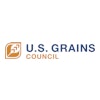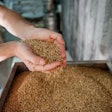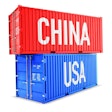
In 2020, China arose as a sudden bright spot for trade. China has also outpaced the top 10 markets for U.S. corn and sorghum in 2021. To help mitigate market fluctuations in China and other grain-buying countries, theU.S. Grains Council (USGC)continues to cultivate emerging and maintain mature markets.
The China situation
As of mid-April, shipments of U.S. corn to China have broken the 10 million metric ton mark (393.7 million bushels) with outstanding sales at just over 13 million metric tons (511.8 million bushels). In addition, during the same period, U.S. sorghum shipments to China surpassed the 5 million metric ton mark (196.8 million bushels), and additional sales on the books rang in at just above 1.3 million metric tons (51.2 million bushels) for the same period.
An added boost for feed grain producers, U.S. barley, can now be exported to China following the approval of a phytosanitary protocol by both countries. As a result, Chinese brewers show increased interest in U.S. barley malt, thanks to new market access and a series of activities organized by USGC to introduce this key ingredient.
These purchases and breakthroughs lead to improving grain-product demand from the world’s largest country by population. They give farmers new optimism after a period marked by trade policy challenges, COVID-19-related losses and fledgling global demand.
USGC attributes this strong grain demand to high import margins by importing U.S. corn to China. These margins are, in turn, due to lowered grain stocks and a swine sector that is professionalizing as it rebuilds from African Swine Fever (ASF) and rebuilding corn stocks in China.
Developing markets
While China’s buying power is welcomed by U.S. grain farmers, for myriad reasons — political, economic or otherwise — China’s purchasing patterns could change. That’s where USGC’s work shines.
“We’re always looking for and developing new markets, whether that’s six or 12 months out or even longer-term. It’s about what can we do to create new markets five or even eight years from now, even,” says Cary Sifferath, USGC senior director for global programs, in接受采访时conducted by the National Association of Farm Broadcasting.
USGC follows countries setting a strong buying pace to help develop and access various overseas markets for U.S. producers. The organization then works to overcome market share issues and develop new markets.
Vietnam imports about 11 million tons of corn a year has purchased over 454,000 metric tons of U.S. corn (17.9 million bushels) so far this marketing year.
埃及是另一个大玉米进口国,每年buying about 10 million tons of corn, has purchased over 452,000 metric tons (17.8 million bushels) as well this marketing year.
“Even in the rest of North Africa, we’ve seen Tunisia, Algeria and Morocco, where we’ve worked for numerous years, come back into buying U.S. corn lately,” Sifferath says.
Mexico has been the number one U.S. corn export market for the last four years, but other countries with which the U.S. has free trade agreements are also big buyers.
“All of the markets in the CAFTA-DR (Central America Free Trade Agreement plus the Dominican Republic) are strong buyers this year, including Guatemala, Costa Rica, Honduras, Panama, Nicaragua and the Dominican Republic. I cluster that whole Central America market together. It’s a very significant market, worth about 4 to 4.5 million tons, or about 158 to 177 million bushels,” Sifferath says.
DDGS demand
U.S. distiller’s dried grains with solubles (DDGS) are still impeded in China by tariffs and duties following both anti-dumping and countervailing duties cases.
But the same U.S. DDGS have become massively popular in Southeast Asia, where five of the 10 largest DDGS export markets are located: Vietnam, Indonesia, Thailand, the Philippines and New Zealand. In the 2020 calendar year, more than one-third of DDGS leaving the U.S. headed for ports in Southeast Asia and Oceania. Increased marketing efforts in the region by USGC have paid off despite the emergence of both ASF and COVID-19.
USGC has been working in Southeast Asia and Oceania for over a decade, expanding DDGS sales by providing technical expertise and connecting grain buyers and end-users with U.S. suppliers. As a result, U.S. DDGS is one of the most widely used feedstuffs in animal feed diets across the region. The nutritional value makes it an excellent source of energy and protein and a great source of amino acids and phosphorus compared to most other feed ingredients.
Reasons for the uptick in U.S. DDGS purchases vary by country. With USGC assistance, grain importers in Vietnam shifted in early 2020 from purchasing containers to ordering bulk vessels to secure feed ingredients. In Indonesia, USGC expanded engagement to reach more broiler and layer producers spread over the country’s extensive network of islands. As a result, participants began DDGS trials and increased inclusion levels that increased demand.
USGC staff members are working on targeted technical education and trade servicing programs focused on including DDGS in shrimp, finfish and marine species. Regional staff and consultants are also targeting the Philippines’ swine and poultry sectors and New Zealand’s dairy industry to increase DDGS interest.
While just one aspect of USGC’s extensive trade work, these sales show why it is essential to maintain a diversified grain trade portfolio, even during times of booming sales. ■




















